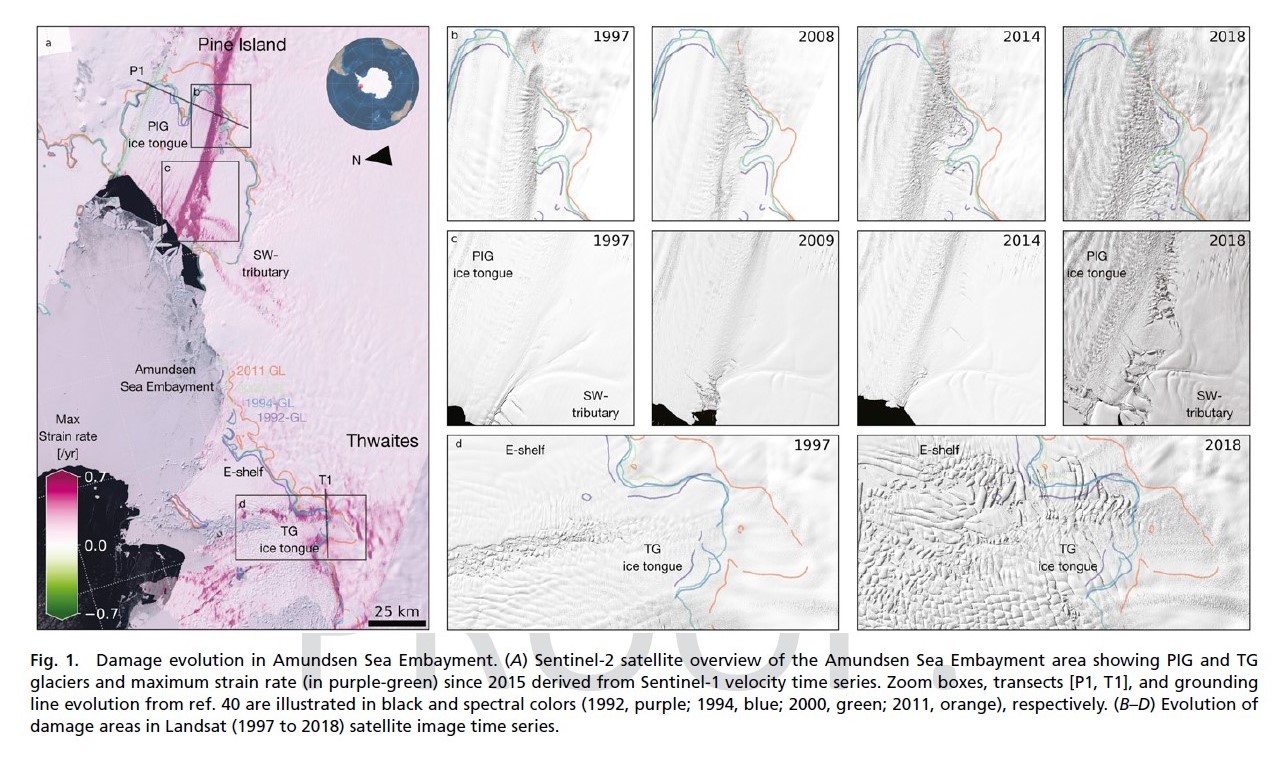Source: TU Delft
In recent years, the Pine Island Glacier and the Thwaites Glacier on West-Antarctica have been undergoing rapid changes, with potentially major consequences for rising sea levels. However, the processes that underlie these changes and their precise impact on the weakening of these ice sheets have not yet been fully charted. A team of researchers including some from TU Delft have now investigated one of these processes in detail: the emergence and development of damage/cracks in part of the glaciers and how this process of cracking reinforces itself. They are publishing about this in PNAS.
Satellite Imagery
The researchers have combined satellite imagery from various sources to gain a more accurate picture of the rapid development of damage in the shear zones on the ice shelves of Pine Island and Thwaites. This damage consists of crevasses and fractures in the glaciers, the first signs that the shear zones are in the process of weakening. Modelling has revealed that the emergence of this kind of damage initiates a feedback process that accelerates the formation of fractures and weakening.

Unstable
According to the researchers, this process is one of the key factors that determines the stability – or instability– of the ice sheets, and thus the possible contribution of this part of Antarctica to rising sea levels. They are calling for this information to be taken into account in climate modelling, in order to improve predictions of the contribution these glaciers are making to rising sea levels.
Reference:
Lhermitte, Stef, Sainan Sun, Christopher Shuman, Bert Wouters, Frank Pattyn, Jan Wuite, Etienne Berthier, and Thomas Nagler. 2020. “Damage accelerates ice shelf instability and mass loss in Amundsen Sea Embayment.” Proceedings of the National Academy of Sciences:201912890. doi: 10.1073/pnas.1912890117.
Related reading:
+ Mass Loss in Antarctica






